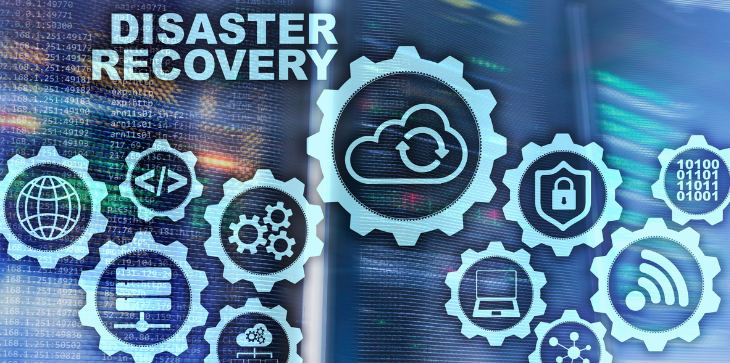Building Resilient IT Systems with Disaster Recovery and Business Continuity Plans
Building resilient IT systems with disaster recovery strategies is essential for ensuring continuity and reliability. A robust disaster recovery plan (DRP) minimizes downtime, enabling businesses to recover swiftly from unforeseen events.
Understanding Disaster Recovery
Disaster recovery involves a set of strategies designed to restore IT systems and data after a disruption. These disruptions may arise from natural disasters, cyberattacks, hardware failures, or human errors. By planning ahead, organizations can ensure minimal downtime and protect critical business functions. Moreover, recovery focuses on maintaining operational continuity and safeguarding sensitive data.

Key Elements
- Risk Assessment: Identify potential threats and evaluate their impact on the organization.
- Backup Solutions: Regularly back up critical data to secure locations.
- Recovery Objectives: Define Recovery Time Objectives (RTO) and Recovery Point Objectives (RPO).
- Testing and Maintenance: Frequently test disaster recovery plans to ensure their effectiveness.
Each of these elements contributes to creating a robust disaster recovery framework.
Why Its Matters
Disaster recovery is crucial for mitigating risks associated with IT disruptions. Without an effective DRP, businesses face prolonged downtime and potential data loss. Additionally, a well-executed DRP builds customer trust by demonstrating reliability and preparedness. Organizations that prioritize can also meet regulatory compliance requirements, ensuring adherence to industry standards.
Benefits of Resilient IT Systems
- Minimized Downtime: Swift recovery ensures business operations resume quickly.
- Data Protection: Secure backups prevent permanent data loss.
- Customer Retention: Reliable recovery processes enhance customer confidence.
- Cost Efficiency: Proactive planning reduces the financial impact of disruptions.
These benefits underscore the importance of disaster recovery in modern IT environments.
Read Also : how-virtual-reality-vr-and-augmented-reality-ar-are-changing-it-solutions
Case Study: Amazon Web Services (AWS) Outage
In 2021, a significant outage disrupted Amazon Web Services (AWS), affecting thousands of businesses globally. Many organizations relying on AWS experienced service interruptions and operational delays. However, companies with robust disaster recovery plans minimized the impact by quickly switching to backup systems or alternative cloud providers.
For example, a leading e-commerce company had implemented a multi-cloud strategy, enabling seamless migration during the outage. This proactive approach allowed the company to maintain uninterrupted services, safeguarding revenue and customer trust. The incident highlights the importance of disaster recovery strategies in mitigating risks associated with IT disruptions.
Steps to Build Resilient IT Systems
- Conduct a Comprehensive Risk Analysis Identify potential threats and evaluate their likelihood and impact on operations. A thorough analysis provides the foundation for an effective DRP.
- Prioritize Critical Systems Determine which IT systems are essential for business continuity. Focus on protecting these systems to minimize operational disruptions.
- Implement Redundant Systems Use redundant servers, storage, and networks to ensure availability during a disaster. Redundancy enhances overall system resilience.
- Leverage Cloud Solutions Cloud-based services offer scalability, flexibility, and cost-efficiency. These solutions ensure rapid recovery and data accessibility.
- Regularly Test and Update Plans Simulate disaster scenarios to validate the effectiveness of your DRP. Regular updates ensure the plan addresses evolving threats and technologies.
- Train Employees Educate staff on their roles during a process. Employee awareness is critical for executing the plan successfully.
By following these steps, organizations can build IT systems capable of withstanding disruptions.
Overcoming Challenges
Implementing D recovery strategies is not without challenges. Small businesses, for instance, may lack the resources to invest in advanced recovery solutions. Additionally, evolving cyber threats require constant updates to recovery plans. Organizations must also address employee resistance to new processes or technologies.
Addressing These Challenges
- Cost-Effective Solutions: Opt for scalable cloud-based recovery services to minimize upfront costs.
- Continuous Monitoring: Use automated tools to detect vulnerabilities and improve response times.
Proactively addressing these challenges helps organizations implement effective disaster recovery strategies.
Future Trends in Disaster Recovery
As technology evolves, disaster recovery strategies are becoming more sophisticated. Emerging trends include:
- AI-Powered Recovery: Artificial Intelligence (AI) enhances threat detection and automates recovery processes.
- Edge Computing: Decentralized systems reduce latency and improve resilience against localized disruptions.
- Hybrid Cloud Solutions: Combining private and public clouds offers greater flexibility and security.
- Blockchain for Data Integrity: Blockchain technology ensures secure and tamper-proof backups.
Resilient IT systems with disaster recovery strategies are essential for maintaining business continuity in an unpredictable digital landscape. By understanding the components of a DRP and addressing challenges, organizations can protect their operations from unexpected events. Real-life cases like the AWS outage emphasize the importance of proactive planning and robust recovery processes. As technology advances, leveraging emerging trends will further strengthen disaster recovery efforts. Ultimately, businesses that prioritize resilience will thrive in the face of adversity.





